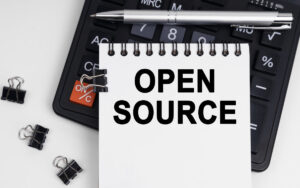Most companies today launch projects to get things done in an organized and timely manner. But are you aware of a set of commonly accepted project management phases? Project management is a widely recognized and respected discipline, making tackling issues, deadlines, and organizational changes easier.
Many projects that begin with high ambitions and good intentions end up falling by the wayside, either incomplete or horrendously late. But organizations that break down the project management process into stages stack the odds of timely, successful project completion in their favor.
This article explores project management steps, discusses the importance of project management, and shows how software enters the equation.
Let’s get things started with a definition.
What is Project Management?
Project management is a collection of skills, knowledge, and techniques to execute and complete projects successfully. Whether the project management process is used for a one-off or more involved project, it’s usually led by a project manager. Project managers typically define project goals, determine the project’s resources and components, assemble the project team, and shepherd the project to its successful completion. However, a project manager’s responsibilities can vary depending on the industry, company size, and business type.
There are different types of project management. For example, waterfall project management dictates that each task must be done before moving on to the next one. Or agile project management, which requires continuous monitoring of the project management life cycle and improving the project’s deliverables. Finally, there’s lean project management, which focuses on avoiding wasting time and resources.
But regardless of the type of project management employed, specific structures and standards are found across many industries. Most projects are split into a series of project management steps, which we are about to explore.
Also Read: Understanding Scope in Project Management: Definition and Importance
The Phases of Project Management
Let’s get acquainted with the project management phases. Most discussions about project management count five steps, although you can find some sources that mention only four stages of project management.
Project Management Phase One: Project Initiation
The first phase of project management involves determining the project’s objectives, the issues the project is meant to address, and the desired project outcome. Next, project planners must develop a business case and broadly define the project, which requires a project charter. This document includes project constraints, goals, appointing a project manager, project budget, the expected timeline, etc.
Additionally, stakeholders should perform due diligence to decide if the project proposal should move forward.
Project Management Phase Two: Planning
This part of the project management process turns abstract ideas into realistic, meaningful goals, and many project managers turn to the SMART goal framework:
1) Specific. Goals must be well-defined, clear, and unambiguous.
2) Measurable. Define the particular criteria that let you measure the goal’s progress.
3) Attainable. The goals must be realistic rather than impossible to accomplish.
4) Relevant. The plans must jibe with the project’s purpose and be achievable using the company’s resources.
5) Time-bound. The goals must have a clear, well-defined timeline with start and completion dates.
Project managers typically develop a series of documents designed to ensure that all the project management steps happen correctly.
1) Scope Statement. The document clearly defines the project, featuring the business need, benefits, objectives, deliverables, and critical project milestones.
2) Milestones. The project manager identifies the high-level goals that must be met throughout the project management life cycle and place them in the Gantt chart.
3) Gantt Chart. This chart is a visual timeline used to plan tasks and visualize the project timeline.
4) Work Breakdown Schedule (WBS). This visual representation breaks down the project’s scope into manageable sections for the team’s benefit.
5) Risk Management Plan. This document identifies all foreseeable risks associated with the project. Common hazards include unrealistic costs and time and estimates, budget cuts, changing requirements, and shortages of committed resources.
6) Communication Plan. If the project involves outside stakeholders, you need a communication plan. The plan develops the appropriate messaging around the project and generates a schedule of when to communicate with team members, taking milestones and deliverables into consideration.
Note: The Project Management Plan is a comprehensive document that outlines the project’s objectives, scope, timeline, budget, and resources needed to successfully complete it
Project Management Phase Three: Project Execution
Here’s the point in the project management process when things finally start moving. Things typically begin with a kickoff meeting featuring the team, manager, and stakeholders. Of all the project management phases, this is where the work gets done.
Project Management Phase Four: Project Monitoring and Adjustment
The project manager checks in regularly with the team, keeps them focused on their tasks, and ensures they have what they need to do their jobs. Phases three and four of the project management phases typically run simultaneously.
Project managers use Key Performance Indicators (KPIs) to confirm that the project is on track. The most used KPIs are:
1) Project Objectives. Ensuring the project is within budget and on schedule.
2) Quality Deliverables. This indicator determines if specific tasks are being performed.
3) Effort and Cost Tracking. Project managers account for effort and resource costs to keep budgets on track. This indicator also shows whether the project is slated to be finished by the completion date.
4) Project Performance. This indicator monitors project changes, considering the kinds and amounts of issues that arise and how quickly they are remedied.
Also Read: 5 Project Management Steps You Need to Know
Project Management Phase Five: Project Closure
At last, we arrive at the end of the project management life cycle. This stage happens at the end of the project once it’s been delivered. This phase allows the team to review, assess, and document the project before moving on to the next one. The project manager usually holds a reflection meeting, presenting a final project report and budget. Additionally, the project manager creates a project punch list of items that still must be accomplished and works with team members to complete them. Finally, the project manager takes point in tying up loose ends by requesting that stakeholders turn over any project documentation and deliverables and terminate any contractor relationships.
Note: Project Management Principles are fundamental concepts and guidelines that guide project managers in planning, executing, monitoring, and controlling projects to achieve their objectives while optimizing resources and minimizing risks.
Why are Project Phases Important?
Splitting the work into project management phases is an excellent way to allocate resources, oversee the project team’s focus, and align the project’s whole life cycle with the clients’ and stakeholders’ needs and expectations.
A project team that thinks in phases ensures that all deliverables are produced to meet the project’s goals. Project management phases also ensure that the team is appropriately ready for the next stage.
But there are additional benefits to the project management process. The approach offers a structured approach to project delivery, with defined responsibilities, activities, and outputs, creating a transparent and common roadmap for the team to follow. That’s because working on projects broken down into succeeding phases helps track and link the team’s progress directly to each step. It’s easy for everyone involved to see when each phase has been completed.
Additionally, assigning responsibilities by phase clarifies the tasks the team should focus on in each phase and helps make communication easier.
Finally, as the project’s evolution progresses, the manager and team can better identify areas that need greater attention within a specific phase. It also marks the points and opportunities for structured reviews to support the project’s governance.
Recommended Project Management Software to Help Simplify the Project Management Process
The project management process is an excellent way to ensure that your projects are completed successfully, within budget, and on time. However, the process takes a lot of work. Fortunately, many cloud-based software tools are available to plan, organize, and track your projects.
Here are three popular project management tools to help you manage the project management phases:
1) Clickup. Built for teams of every size and industry, ClickUp is one of the highest-rated all-in-one project management tools available today. Teams can access calendars, chat, custom views, docs, goals, reminders, scheduling, assigned comments, and more. Clickup counts companies such as Google, Airbnb, and Uber among its customers, with over 800,000 teams worldwide enjoying this app’s fully customizable and proprietary features.
2) monday.com. The monday.com Work OS is an award-winning work management platform that lets teams efficiently manage projects and workflows. This fully customizable software is used by over 152,000 customers worldwide, allowing groups to plan, manage, and track all their projects in one convenient place. It also provides easy-to-use time-saving features like automation, document sharing, time tracking, and real-time collaboration. In addition, multiple board views like Gantt and Kanban help you structure and navigate your tasks and projects the way you want, with dashboards providing a high-level overview of your progress. Additionally, Monday.com integrates with apps like Excel, Outlook, Microsoft Teams, and Gmail.
2) Wrike. Wrike is a robust work management platform that lets teams plan projects and collaborate in real-time. Over 20,000 companies, including Estée Lauder, Sony, and Siemens, use this award-winning software. This app contains customizable features such as cross-tagging, dashboards, Gantt charts, request forms, proofing, and time tracking. Teams can integrate with over 400 apps from companies like Google, Microsoft, and Salesforce. In addition, teams can automate repetitive tasks and work from anywhere, with full access to all files courtesy of Wrike’s mobile and desktop apps.
Also Read: Understanding KPIs in Project Management
Do You Want to Learn How to Become a Project Management Expert?
As we can infer from what we’ve just read, today’s businesses need great project managers. The best way to become an outstanding project manager is to take an online practical project management certification class. Simplilearn, in collaboration with the University of Massachusetts, offers a six-month certification course. This comprehensive project management course is aligned with PMI-PMP and IASSC-Lean Six Sigma and lets students earn 146 PDUs to maintain their CCR for PMI-related certifications.
In addition, when you complete the course, you will earn your certification and an alum membership to the prestigious UMass Amherst Alumni Association. In terms of salary, Indeed.com reports that project managers employed in the United States earn a yearly average of $83,584. The low range for project managers is $53,523, while it goes as high as $130,529.
So, get your project management career off to a promising start, or, if you already have a career as a project manager, boost your skills to the next level and increase your project management understanding. Sign up today!
You might also like to read:
Project Management Frameworks and Methodologies Explained
What is a WBS in Project Management, and How Do You Use it?







